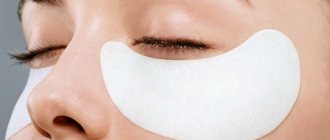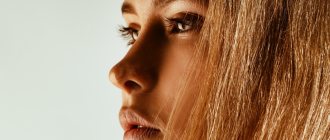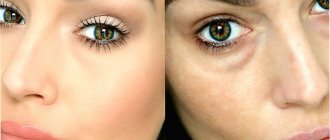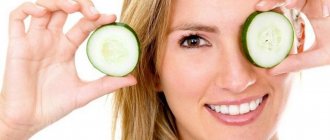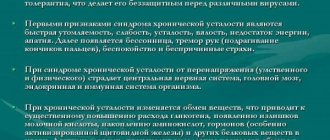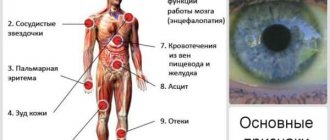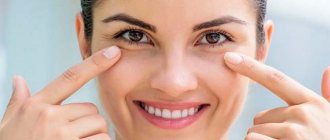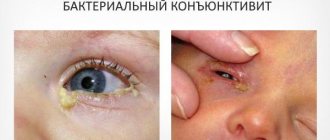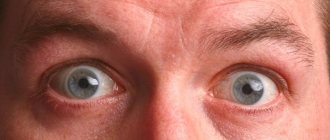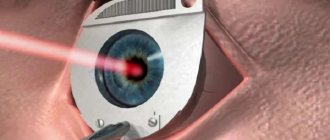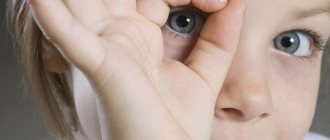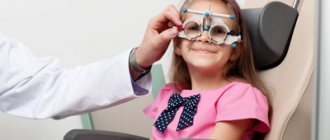“Check-lifting” or “cheek-lifting” (cheek-lifting) is an operation aimed at “rejuvenating the cheeks” - the middle zone of the face, and also, this correction eliminates paint bags on the cheekbones
.
We asked a plastic surgeon specializing in anti-aging facial surgery, Igor Bely
.
— Igor Anatolyevich, why is there so much misunderstanding among doctors and patients regarding what “check-lifting” is?
True point. Indeed, often when patients get ready for or even undergo a check-lift, they do not fully understand what specific manipulations are being performed. There are many parallel procedures that are part of the check-lift operation. For example, lower eyelid surgery. It happens that surgeons pass off such additions as full-fledged operations, thereby increasing the cost of their services. Although, it is impossible to carry out a check-lift without lower eyelid surgery.
Temporal (temporal) lifting and check-lifting are often confused, although these are completely different types of operations, and they are aimed at different areas... Endoscopic lifting of the midface area is also not the same. Midface endoscopy is performed using endoscopic equipment, with incisions made in the mouth and temples. At the same time, some surgeons strongly recommend the use of endotins, which, in addition to having their pros and cons, also significantly increase the cost of the operation.
Painting bag or “suf”: the problem can appear early and is relevant at any age
— Is it true that check-lifting is an operation that allows you to remove the hated paint bags on the cheekbones?
Yes, that's right, check-lifting solves this problem. Painting bag or “soof” (oculi fat, soof)
is an anatomical formation that is largely
associated with the structural features of the soft tissues of the zygomatic region, usually a hereditary feature, genetic predisposition
. Therefore, the problem of paint bags is more often expressed in Europeans and Slavic peoples and less pronounced or appears later in Asians. Therefore, the problem can appear very early and is relevant at any age.
How are paint bags formed?
There is much more room for discussion here.
Let's turn to history.
Malar edema is a triangular-shaped cushion formed from dense subcutaneous fat.
This condition was analyzed in detail from an anatomical point of view in Pessa, Garza 1997. Using dye and histological examination, the authors established that edema is a facial formation of the lower eyelid and cheekbone, which they called the malar septum. It starts from the orbital edge of the periosteum in the area of the arcus marginalis superiorly, deepens into the skin of the cheekbone 2.5–3 cm downward to the lateral canthus. The septum divides the suborbicular fat into superior and inferior components.
The inferior component merges with the malar fat, while the superior component refers to the malar convexities.
According to the authors, the malar septum is a relatively impermeable barrier that allows tissue edema and hemoglobin to accumulate superiorly, and thus defines the inferior border of anatomical structures such as malar edema, malar tubercle, scallop, and periorbital ecchymosis. Typically, edema forms in the nasolabial-zygomatic area. Fat is attached to the skin and supported by several fibrous septa that are located in the superficial muscular aponeurotic system (SMAS) and then extend into the dermis. Loss of skin elasticity and weakening of these septa, as well as loss of volume in the area of the medial malar fat, lead to the skin moving down and forward and the fat pad sliding into the nasolabial area.
As a result, there is a deepening of the nasolabial folds, sagging of the cheeks and loss of expression of the zygomatic elevations. The lower eyelid lengthens, stretching the orbicularis oculi muscle, forming a tear trough and V-shaped deformities along the upper jaw and zygomatic bone. Individual fat pockets become visible as clearly defined formations that are absent on a young face.
It is the correction of this area, like no other, that can restore a youthful appearance to the face.
So, we know about the paint septum that we know little about it. Great minds argue, but we – practicing specialists – are left with the question “What to do?” Not finding an answer, I decided to ask the doctors at my clinic. Opinions were widely divided.
This article is not intended to teach you how? The main goal is to ask questions to practitioners and highlight the most dangerous techniques. Let's go from simple to complex.
Swelling on the cheekbones: causes and consequences
Year after year goes by. The first signs of age appear as bags and puffiness under the eyes. After a few more years, a second fold begins to appear in the area of the cheek bones. These are “painting bags” (their second name is “sufa”).
Like bags under the eyes, they have similar unpleasant properties.
Firstly, fatty hernias on the cheekbones greatly spoil the appearance and make the face sad.
Secondly, these formations consist entirely of adipose tissue, so they tend to retain water, increase in size and form malar edema.
We often hear that the cause of swelling on the cheekbones is insufficient self-care. They say, take time for yourself, and miraculous creams, massages and vitamin complexes will remove all the bags under the eyes on the cheekbones in a month, and you will again shine with youth and beauty.
To be fair, it is worth saying that cheekbones are not a disease. This is an anatomical feature of the body: paint bags filled with adipose tissue. However, in youth, the good tone of young skin hides the problem.
With age, the skin becomes drier and thinner, the facial muscles lose their elasticity, the fatty tissue begins to sink down, sag, and... Everything secret becomes clear.
Ablative Fractional Radiofrequency
In our clinic it is Venus Viva.
| pros | Minuses |
| Works. Ablation helps us achieve the desired results. | The patient must be prepared for the rehabilitation period. From 5 to 7 days. You can carry out the procedure without complicated rehabilitation, but if you want results, you will have to endure it for a couple of days. |
Causes of swelling
The place where the accumulation of fat is located begins to sag in older women, fluid accumulates there and entire pockets form.
The anatomical feature of the facial structure may be such that the formation of sufas occurs at an early age. Naturally, the fact that puffiness appears under the eyes brings a lot of trouble to ladies. The reasons for this anomaly are as follows:
- The area of the tear duct, where the subcutaneous fat is located, may become deeper. This happens because the fat melts and the bags become more convex.
- An inflammatory process that led to swelling.
- Excessive subcutaneous fat near the eye muscles may be congenital.
Contour plastic of the middle third
This is the perfect camouflage. For example, my mother, a doctor of science and head of the department, always chooses camouflage with hyaluronic acid over and over again. Why? You should always be socially active. The doctor of our clinic, Anna Aleksandrovna Dyukhova, for the purity of the experiment, provided the results of her work, where there is no other correction except for the middle third, and masking of malar edema (festoons) was done.
We are fighting to ensure that photographs of patients are taken not immediately after the procedure, when there is injection swelling, but after a couple of weeks. In these photographs this principle is preserved.
| pros | Minuses |
| Beautiful. General rejuvenating effect. | Validity period: 6–8 months. If the filler and injection layer are chosen incorrectly, it can aggravate the malar edema. |
Compresses and applications at home
When the first signs of paint bags appear, you can prevent their increase by using applications and compresses.
Ice cubes made from decoctions of medicinal herbs are effective:
- St. John's wort;
- chamomile;
- sage:
- coltsfoot;
- Oak bark.
You can use all the herbs individually or in combinations that have anti-inflammatory and tonic properties.
You can get rid of paint bags on your cheekbones using lotions from various herbal decoctions
Regular salt will help. It must be packed in a linen or canvas bag, wet and applied to the problem area for 10 minutes.
Other recipes for compresses or applications:
- Peel and boil 1-2 potato tubers. Mash, you can add 1-2 drops of olive oil. Place the resulting puree in gauze and apply to the cheekbones. Raw potatoes, which are previously ground on a fine grater, are also suitable for the procedure.
- Separate the egg white and beat it until thick foam. Place the mixture on the cheekbones. After half an hour, rinse with warm water. Protein dries the skin, so it is advisable to use a nourishing cream after the procedure.
- Dilute baker's yeast with warm water (milk). The consistency should resemble thick sour cream. Place on the problem area for 15 minutes, rinse with warm water.
Compresses and applications should be done 2 times a week and do not forget to perform special exercises.
Don’t miss the most popular article in the section: Plasmolifting of the face - what it is, how it is carried out, results, photos before and after the procedure.
Out Of Label
Some cosmetologists, having attended plastic surgeons' master classes, for some reason decided that Diprospan injections into paint bags are a panacea that no one knows about, and only they have discovered sacred knowledge.
Comments Nino Konstantinovna Kobaladze, head of the plastic surgery department at MedClinic (St. Petersburg), member of the European Medical Laser Association, member of the International Association of Laser Medicine and Surgery, member of the American Academy of Anti-Aging Medicine:
Why can’t a cosmetologist inject Diprospan into paint bags? This is a very complex, serious drug that can cause atrophy of subcutaneous fat, and its incorrect administration can lead to unpleasant and visible complications. "Diprospan" is usually administered by surgeons in the treatment of complex subcutaneous scars with contractures and keloid scars. It is very important to feel the tissue and understand exactly where the needle is. The dosage, dilution and indications for this drug are also important.
Malar edema: popular non-medical treatment methods
Sufs greatly spoil the face, and women, whom nature, through some evil irony, has given the appearance of a drunken alcoholic, are often ready to do anything to get rid of such “beauty.” Some measures that beautiful ladies resort to do not bring much effect, but do not cause much harm either.
These, for example, include the following methods of eliminating swelling under the cheekbones:
- Lymphatic drainage massage. Essentially, it is a massage that improves the movement of fluid in the body. If the cause of unsightly bags in the middle of the face is stagnation of water, then such a massage can reduce their size, albeit slightly. But this measure can only bring such benefits if the massage is performed by a professional.
- Use of diuretics. This method of combating macular and other edema can be used if prescribed by a doctor. It is under no circumstances recommended to dehydrate your body on your own, as this can lead to disruption of the functioning of many organs.
- Using Troxevasin gel, creams with badyaga or leech extract. All these measures do not aggravate the situation with malar edema, but they do not solve the problem either.
- Taking vitamin preparations. Sometimes painting bags appear after suffering stress or illnesses that undermine the body. Taking vitamin complexes can support the immune system, improve overall well-being and, as a result, refresh the face. This measure can be used as an auxiliary way to combat swelling.
- Gel Solcoseryl. Some brave beauties use it to reduce puffiness under the eyes and claim that the product helps them. There have not yet been any cases where the gel caused serious harm to someone after such use, so the gel can be applied to the cheekbone area, where the skin is not so sensitive, without much concern. True, such treatment does not guarantee results.
- Antihemorrhoidal drugs. Such products are capable of relieving swelling of inflammatory etiology, so for those who have paint bags as a result of inflammation, ointments Relief, Proctonis, etc. can help to a certain extent.
Experienced cosmetologists do not recommend resorting to the following “folk” methods for treating swelling on the cheekbones:
- Blefarogel. It contains hyaluronic acid, a substance that retains fluid, so its use may have the opposite effect than expected.
- Euthyrox. Some women with malar edema who have independently diagnosed thyroid disorders begin to take the drug. They are at great risk, since Eutirox is a hormonal drug that can only be taken under the supervision of an endocrinologist.
- Botox. After the procedure, lymph circulation in the area affected by the drug deteriorates, which leads to increased swelling.
- Biorevitalization. It is almost impossible to guess the amount of the drug at which the bags on the cheekbones will smooth out and not fill with liquid. Often, after such a procedure, women need to undergo an intensive course of getting rid of malar edema using cosmetic procedures.
Disadvantages of surgery
But there are negative aspects to surgery. It is because of them that the demand for this service is decreasing. In addition to the high cost of the operation and long rehabilitation, it has the following serious disadvantages:
- For people of the younger generation, check-lifting surgery is not suitable.
- Any surgical intervention can have negative consequences for the body.
- The result may be zero. The reaction of the human body during surgery can be unpredictable and even the most experienced surgeon is not immune from this.
Before the operation, it is necessary to consider all the pros and cons and see that the risks of such an intervention are so high that they exceed even the excellent result from it.
